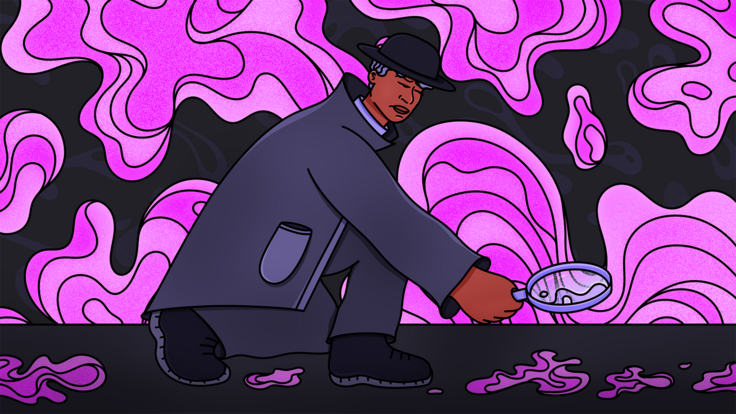by Steve Allen and Maruša Bradač

A new study reveals clear evidence of dark matter (blue), separated from ordinary, luminous matter (red) by a merger of galactic subclusters. (Photo courtesy of Maruša Bradač.)
A new study of an immense cosmic collision has provided confirming evidence for dark matter. Our team analyzed the mass content of the enormous, merging galaxy cluster MACSJ0025.4-1222 using the Hubble and Chandra Space Telescopes to disentangle dark and normal matter—that is, matter made up of baryons, common subatomic particles such as protons and neutrons. The new results confirm those obtained from the 2006 study of the Bullet Cluster, providing a clear view of dark matter, separated from ordinary baryons.
The study examines the aftermath of a merger between two giant sub-clusters, each a whopping million billion times the mass of the sun. As these collided at millions of miles per hour, most of the normal, baryonic matter in each—in the form of hot, X-ray emitting gas—interacted with the similar matter in the other and slowed down, like a diver encountering the water's surface. In contrast, the dark matter did not interact significantly and passed through without disruption. This difference caused the dark matter to sail ahead, leaving the X-ray luminous, baryonic matter lagging behind.
We used high-resolution optical images from Hubble to infer the distribution of total mass through a phenomenon known as gravitational lensing, in which the otherwise invisible dark matter bends light from galaxies in the background. We used Chandra's high-resolution X-ray images to map the position of the baryons. The observations show a clear separation between the dark and X-ray luminous, baryonic matter, providing direct evidence for dark matter and supporting the view that dark matter particles interact only very weakly, through gravity but little else.
For a closer look:
See animations of a cluster collision from the Chandra Web site (QuickTime or MPEG) and from SLAC (.mov file).
Read the news release from HubbleSite News Center.
This story first appeared in SLAC Today on August 28, 2008.






